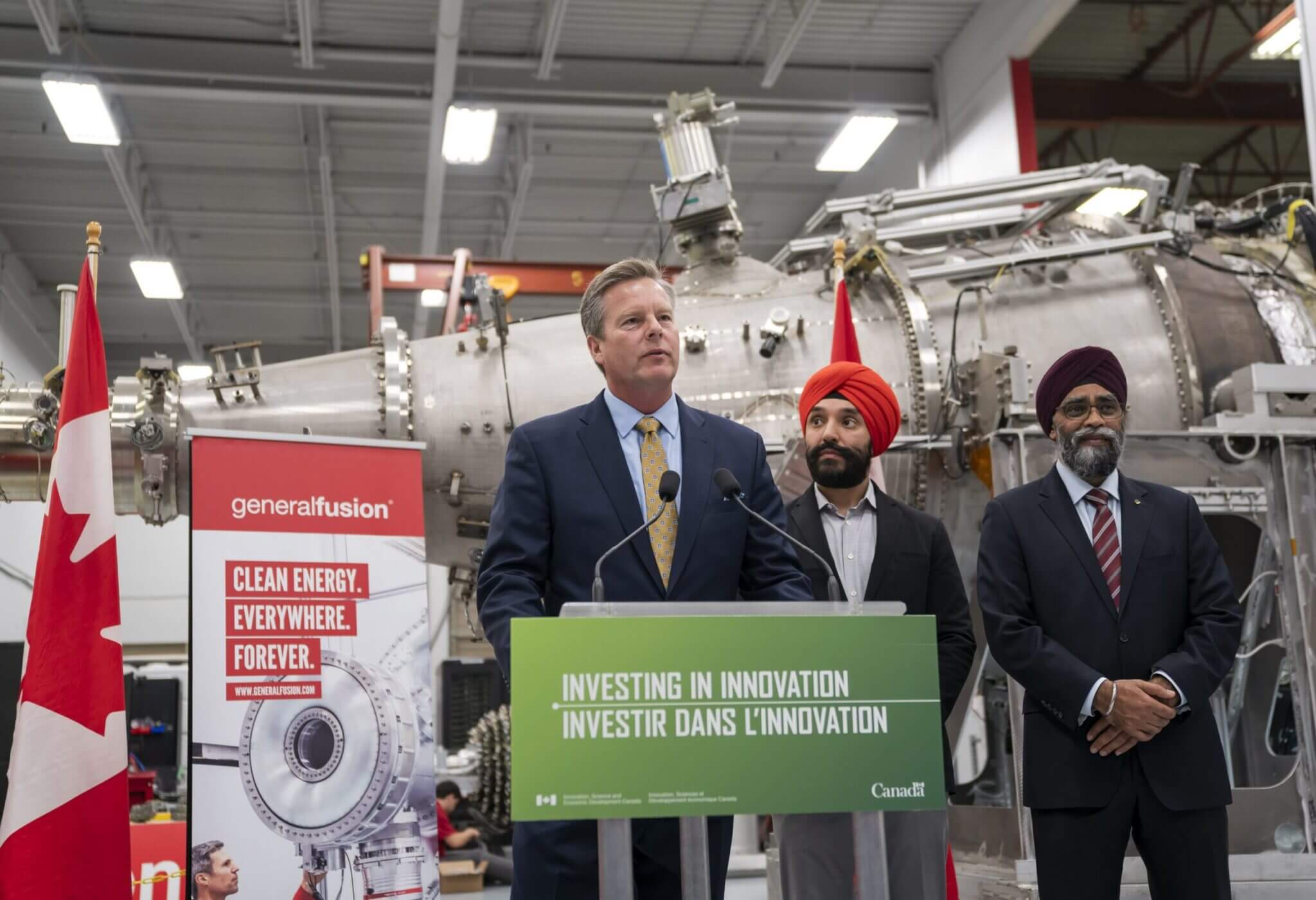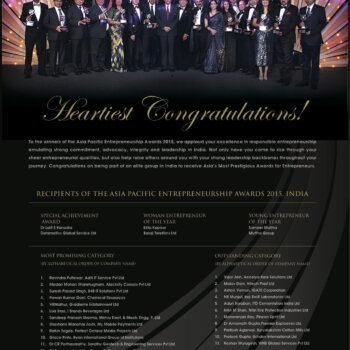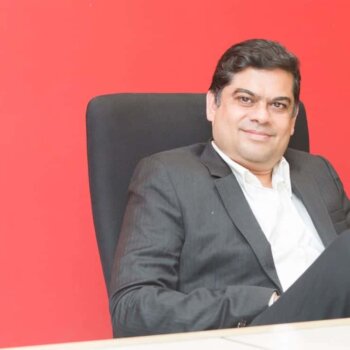Fusion is now – Where is Asia in the fusion race?
I spoke with Chris Mowry, CEO of General Fusion at EmTech Asia Singapore 2019, a gathering of the world’s most influential leaders and innovators who are driving the next generation of technological breakthroughs and changing the world.
During our interview, I posed three questions: why fusion, why General Fusion, and why now.
Here are his insights into fusion’s role in the business of energy.
Why fusion?
The reason for fusion, or the reason for developing any new energy technology in the 21st century, really, is to address and mitigate climate change. Today’s consumer electronics and productivity tools all use electricity – and while they may be more efficient than earlier equipment, the fact remains that they still all consume electricity. We are increasingly dependent on these electronic gadgets and they seem to be proliferating at an exponential rate into every aspect of our lives. The natural consequence is that the demand for electricity is growing at an incredible rate and is projected to double over the next 50 years.
If you look at Southeast Asia, it has one of the world’s highest growth rates in the population. The economies in the region are also growing. As a result, the growth in demand for energy and electricity in South East Asia exceeds the global average. The region presents a huge need challenge for those developing new technology options for generating environmentally responsible and economically competitive electricity.
Southeast Asia also presents large geographic constraints on practical energy technology alternatives. Renewable energy technologies such as wind and solar were deployed on a large scale in the first part of the 21st century. But their economies are not compelling in this region and other geographic factors create practical limits to how far they can expand.
Solar energy might be a good solution for the Middle East, but it is not a very good option for Singapore. As an island nation, Singapore frequently experiences cloudy weather and the amount of energy generated from solar panels is not economical for large scale power production. Additionally, solar power is not a very dense form of energy, so it requires very large areas to produce much electricity. National energy density is a very important consideration for island nations such as Singapore.
Energy planners experience similar challenges with wind energy –as there are no trade winds in the tropics. Compared to temperate regions in the world, the wind is therefore not a great option for countries near the equator. As for hydropower, you need either high mountains or big rivers, which Singapore does not have.
The challenge remains; there are insufficient options for de-carbonizing energy production in Southeast Asia, let alone increasing the energy supply to meet increasing demand. Most of the electricity in Singapore comes from natural gas, while in Malaysia and Indonesia electricity is generated primarily by burning coal and other fossil fuels. This needs to change and new technology options need to be developed.
While there has been a lot of effort in trying to introduce traditional nuclear power into countries in Southeast Asia, nuclear reactors based on existing commercially available technology present a twofold challenge. First, the traditional nuclear industry has a history of operating and economic challenges. This has led to the requirement for complex regulatory infrastructure which must be established to properly license power plants and create the necessary environment for safe operations. The second and larger challenge is the social license for introducing these nuclear power plants into society in the wake of incidents such as the Fukushima disaster.
Why General Fusion Now?
I have spent much of my career in traditional nuclear power and has observed first-hand the challenges that this technology has in being deployed at a scale that is relevant for driving the energy transition in regions such as Southeast Asia. General Fusion is based in Vancouver, in the province of British Columbia in Canada. This province has a law against nuclear power. So, while on a theoretical level fusion is a type of nuclear energy just like fission, from political and public perception considerations, it is not viewed as nuclear and for good reasons. With fusion, you simply cannot have nuclear accidents and there is no long-term nuclear waste.
Fusion also costs one half to one-third of the cost of nuclear power. While a wealthy country like Germany can effectively subsidize cleantech regardless of economics, the reality is different for most of Southeast Asia, where new technologies must be economically competitive with coal to be adapted. If new technologies are unable to compete with coal on cost, there is no chance of wide-scale market adoption. Fusion, at least General Fusion’s version of the technology, is completely competitive with coal.
Why are you not already here? What do you need from South East Asia to welcome General Fusion?
In fact, General Fusion has been warmly welcomed into Southeast Asia. General Fusion has had a lot of interesting conversations in Singapore and Indonesia over the past few years. And Malaysia has been an investor of General Fusion since 2015, reflecting the fact that Malaysia knows that it needs to move away from coal as the source of its energy. Malaysia’s investment in General Fusion is an investment into the future, and given Singapore’s current stance on sustainability, fusion also fits well into Singapore’s geopolitical conversation regarding energy.
As for other Asian countries, India is building coal plants at an increasing rate, since they currently seem to have no other economically viable option. If a company brought forward a practical new energy technology that was economically competitive with coal, it would be quickly adopted.
Why General Fusion and why not someone else?
I came to General Fusion because it has a practical approach to making fusion happen on a timescale that is relevant for mitigating climate change. Many other private fusion companies are developing innovative variations of the technology which big government research programs have used for the past 50 years, as they explored the underlying science of fusion. But, just because the design of a fusion machine or its technical architecture is good for research does not mean it can be translated into a practical power plant technology. For example, fusion happens at extremely high temperatures, so one of the historical challenges has been how to make a machine that lasts long enough to be practical for use in a power plant.
General Fusion’s approach to fusion is completely unique. It is an approach that solves the long-standing challenges to developing a practical fusion technology architecture in a way that other technologies do not. As the CEO, I look at fusion not so much from the science aspect, but more around the economics and policies of energy and society.
I ask myself, “Is this a technology that can be embraced by all stakeholders in the energy transition underway to mitigate climate change? Is it a practical and economically competitive approach to providing energy in the 21st century?” From my perspective, technology answers to these questions are where General Fusion has the lead in the whole ecosystem of private fusion ventures.
Are you a patent holder of this machine that lasts a long time?
General Fusion owns the intellectual property, in the form of patents, for the technologies which enable its fusion machine to be durable in a power plant environment. This is essential and maintains our unique technology advantage. Other companies are taking different technical approaches, such Commonwealth Fusion Systems which spun out of MIT last year. The special thing about General Fusion is that the company is now ready today to demonstrate, at power plant relevant scales, a commercially viable approach to fusion.
For the general populace who read this, what would you want them to know?
Fusion is a technology that can give people energy no matter where they live, no matter where they work, and with no impact on the environment. It is an energy technology which is both socially and economically relevant for sustainable development and the mitigation of climate change.





























